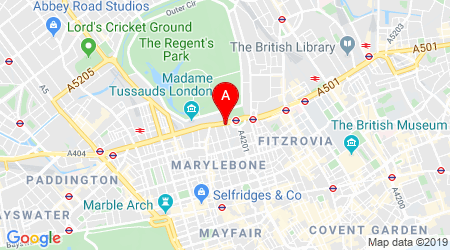Breast augmentation, also known as breast enlargement or breast implant surgery, is the most commonly performed cosmetic surgery procedure in the UK.
Quick guide
- Anaesthetic: general anaesthetic.
- Time of intervention: 1-2 hours
- Time in hospital: 1 day
- Problems: adaption to the implant in the first 24 hours
- Swelling: 10 days
- Recuperation: 4-6 weeks
- Final result: about 6 weeks
Am I suitable for a breast augmentation procedure?
Breast enhancement is very popular with young women who have always been dissatisfied with the size and/or shape of their breasts.
Older women who have seen changes to their body over time, whether due to fluctuations in their weight or the effects of pregnancy and breast feeding, often wish to restore volume where it has been lost. Also women who have noticeably asymmetrical breasts can have this corrected with breast augmentation surgery.
Breast implant surgery is a fantastic way to boost your confidence and Dr Roger Amar’s London breast augmentation patients are very satisfied with the changes to their breast size and shape. There is a wide range of different sizes to choose from and, depending on the effect you are wishing to achieve, Dr Amar is able to advise you which breast implants are suitable for your height and frame.
What can I expect during my breast augmentation procedure?
Breast augmentation surgery with sub-pectoral placement has been the best choice for natural results for many decades. Performed under general anaesthesia, there are two main technical approaches for where the incision can be made; submammary and axillary.
Via the areolar is probably the preferred incision by most cosmetic surgeons – an incision is made in the lower half of the nipple and for those women who have darker nipples than the surrounding skin, the scar can be well-hidden.
This incision does mean that the mammary gland and breast tissue is adversely affected when the implant is inserted and the muscle is cut which can be more painful. Over time, this incision also results in more chance of sagging as the implant is not as supported. Dr Roger Amar rarely uses this technique.
The submammary approach is to make an incision along the inframmary fold. Many women seeking breast augmentation do so because their breasts are very small and therefore scar would be very noticeable. For those women who do have a degree of ptosis in the breast, the scar will be hidden in the fold but can still be noticeable even when lying down.
The axillary or underarm or armpit approach; this is the most technically challenging approach, which is why few London cosmetic surgeons offer it, but in the hands of a skilled practitioner such as Dr Roger Amar, it offers the most pleasing aesthetic result with the least downside for the patient.
There will be no scarring around the breast and the implant is placed below the muscle without the muscle or breast gland being damaged. It produces a more natural result, hides the outline of the implant and there is much less chance of sagging or shape change, even after pregnancy and breastfeeding.
In these two approaches, the implant is placed under the pectoralis muscle for two reasons: first, there is no contact between the implant and breast gland which can affect the pathology and radiology of the breast. Second, the implant can not be detected by palpation and no chance of capsular contracture deformity.
Dr Amar very rarely uses the areolar approach. Using this technique, it is not possible to place the implant behind the muscle without sectioning the lower muscle fibres which can adversely affect this important muscle. There is also a very high percentage of developing capsular contracture.
These factors will have been discussed in full at your London breast augmentation consultation prior to making the decision to go ahead with surgery. Breast augmentation surgery can also help to correct any asymmetry and this will have been assessed at the consultation.
Are there any possible complications associated with breast augmentation surgery?
The most common complication associated with breast augmentation is capsular contracture, which can develop a few months post-procedure. Scar tissue forms around the implant which can tighten and constrict, causing the implant to feel hard or change shape. There are a number of options to deal with capsular contracture, but sometimes the implant and scar tissue may need to be removed before another implant is inserted.
Capsular contracture is much more comment when the implant is put directly under the skin as occurs with the areolar approach. Sometimes, Dr Amar has had to remove implants and scar tissue in patients who have undergone breast augmentation elsewhere before inserting new implants behind the muscle with a submammary approach.
Infection is usually successfully prevented by pre-operative antibiotics.
It can be more common to experience changes in sensitivity to the nipple and breast, either becoming very oversensitive or feeling numb. This is usually temporary but can take a couple of months to subside.
Occasionally, after ten years or more, breast implants may break or leak. Rupture can occur as a result of injury or even from the normal compression and movement of your breast and implant. The majority of Dr Amar’s patients have not had to remove broken implants because the natural protection of the body, capsula and muscle and the high cohesivity of the silicone gel has maintained the implant intact. Dr Amar uses smooth implants without texture to ensure the stability of the implant and also to allow it to move freely behind the pectoralis muscle as a normal breast would.
While the majority of women do not experience these complications, they will be discussed in full at your consultation with Dr Amar so you fully comprehend any potential risks before you decide to go ahead with breast augmentation surgery.
For more information on breast augmentation surgery or any of the cosmetic surgery procedures we offer at London FAMI Clinic, call 0800 612 7475 to book a consultation.


